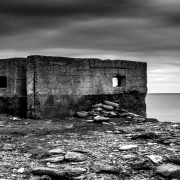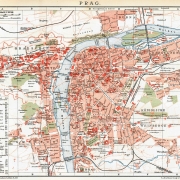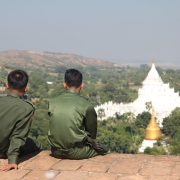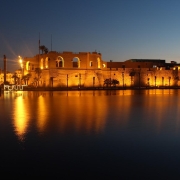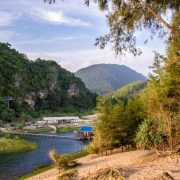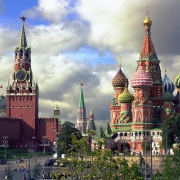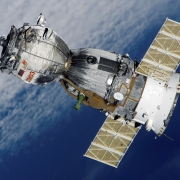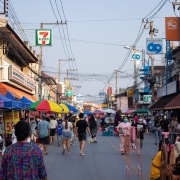What was the Marshall Plan?
Topic of Study [For H2 History Students]:
Paper 1: Understanding the Global Economy (1945-2000)
Section B: Essay Writing
Theme II Chapter 1: Reasons for growth of the global economy
Topic of Study [For H2 and H1 History Students]:
Paper 1: Understanding the Cold War (1945-1991)
Section A: Source-based Case Study
Theme I Chapter 1: Emergence of Bipolarity after the Second World War II
A crisis like no other: Post-war economic conditions
By the end of the Second World War (WWII), most European nations in no shape to restart industrial production. The devastation wrought by aerial bombardment had destroyed many cities, turning citizens into refugees that were housed in temporary camps. Many turned to the United Nations Relief and Rehabilitation Administration (UNRRA) for aid and assistance, such as food and supplies.
Germany was one of those worst hit in the region. In West Germany, the economy was affected by the population change due to WWII. By 1945, death casualties amounted to 4 million by 1945. Additional millions were killed while in Soviet captivity. Even so, the West German population, which was less than 40 million in June 1939, grew to about 48 million by 1950.
The war had turned Germany into a land of refugees, for immigration from the East was preceded by the mass evacuation of urban dwellers during the Allied bombing campaign. By the end of the war, close to 9 million residents of German cities had taken refuge in the countryside. One- third of them were unable to return until 1947. One million residents had abandoned Berlin alone.
[…] The catastrophic living conditions and the unwelcome presence of refugees and expellees not only invoked social conflict and public distress; the inadequate housing supply was an impediment to economic recovery, too. With the millions displaced by war trapped in rural communities, urban industry could not find sufficient labour to lift production. Much of the working time and energy of the existing urban workforce was diverted to rubble removal and reconstruction efforts, often in the context of administrative work assignments under the command of the occupation authorities.
An excerpt taken from “The Economic Consequences of the War: West Germany’s Growth Miracle after 1945” by Tamás Vonyó.
Rehabilitation and recovery:
In the words of British Prime Minister Sir Winston Churchill, Europe was a “rubble-heap, a charnel house, a breeding ground of pestilence and hate”. In his speech addressed to the audience at the United Europe Committee Meeting in 1947, Churchill called to “promote the cause of united Europe” to “sweep away the horrors and miseries”.
In response to this urgent need for aid, the United States launched the European Recovery Program, which later more commonly known as the Marshall Plan. It was a US-led program named after the Secretary of State George C. Marshall to give aid to Western Europe for post-war reconstruction.
As a four-year plan that ran from 1948 to 1951, recipient nations would have the finances and other forms of support to rebuild their industries and essential infrastructure.
Eventually, sixteen countries accepted the Marshall Plan (Austria, Belgium, Denmark, France, Greece, Iceland, Ireland, Italy, Luxembourg, The Netherlands, Norway, Portugal, Sweden, Turkey, the United Kingdom, and West Germany), which totaled $13.2 billion. In today’s dollars, the Plan would have amounted to a staggering $800 billion.
Between 1948 and 1952 (four and a quarter years), the United States transferred $13.2 billion to the sixteen Marshall Plan countries. Accounting for inflation over those years, the total was $14.3 billion (that is, in 1952 dollars). The aid was front-loaded, with 31 percent coming in 1948, 30 percent in 1949, 20 percent in 1950, 12 percent in 1951, and 8 percent in 1952. The largest recipients were the U.K. ($3.2 billion, or $32 billion today), France ($2.7 billion, or $27 billion today), Italy ($1.5 billion, or $15 billion today), and West Germany ($1.4 billion, or $14 billion today). Austria and Norway were the biggest beneficiaries per capita ($130, or $1,300 today).
An excerpt taken from “The Marshall Plan: Dawn of the Cold War” by Benn Steil.
Containment or recovery?
The Truman administration introduced the Marshall Plan not solely for the purpose of rehabilitating Europe. In addition, the support for post-war recovery was an effective approach to counter Soviet Communism.
The administration’s East European chiefs of mission would conclude that “any and all movements within world communism which tend to weaken and disrupt the Kremlin’s control within the communist world represent forces which are operating in the interests of the West and therefore should be encouraged and assisted.” These statements made clear that it was Soviet influence, rather than communism as such, that the United States would oppose through the use of economic and political levers.
An excerpt taken from “The Marshall Plan: Dawn of the Cold War” by Benn Steil.
Studying the importance of US aid
Although the Marshall Plan was no doubt significant in financing the post-war recovery of European nations, questions were raised over its extent of contributions as compared to other factors. As aptly described by Herbert C. Mayer, “like all economic miracles, the German Wirtschaftswunder (economic miracle) was the result of wise planning, hard work and well timed aid… the German recovery would not have been accomplished alone”.
Historical statistics suggest further that recovery had begun well before the currency reform and that it was not transformed into sustained growth until the early 1950s. […] the most important limiting factors of industrial expansion in post-war Germany, namely the urban housing shortage and the structural disproportions caused by the redrawing of borders, persisted for many years after 1948. Foreign aid did little to improve these conditions, for it was not substantial enough and it was not focused primarily on these critical bottlenecks.
[…] At the same time, fiscal policy was chiefly responsible for the price stability that made West Germany the object of envy in the Western world and which earlier accounts as well as most international observers considered to be the achievement of the German Bundesbank. In reality, and most of the time, monetary policy played second fiddle.
An excerpt taken from “The Economic Consequences of the War: West Germany’s Growth Miracle after 1945” by Tamás Vonyó.
What can we learn from this article?
Consider the following question:
– How far do you agree that the post-war reconstruction of Europe can be explained by American aid?
Join our JC History Tuition to learn more about the Global Economy and the Cold War. The H2 and H1 History Tuition feature online discussion and writing practices to enhance your knowledge application skills. Get useful study notes and clarify your doubts on the subject with the tutor. You can also follow our Telegram Channel to get useful updates.
We have other JC tuition classes, such as JC Math Tuition and JC Chemistry Tuition. For Secondary Tuition, we provide Secondary English Tuition, Secondary Math tuition, Secondary Chemistry Tuition, Social Studies Tuition, Geography, History Tuition and Secondary Economics Tuition. For Primary Tuition, we have Primary English, Math and Science Tuition. Call 9658 5789 to find out more.

